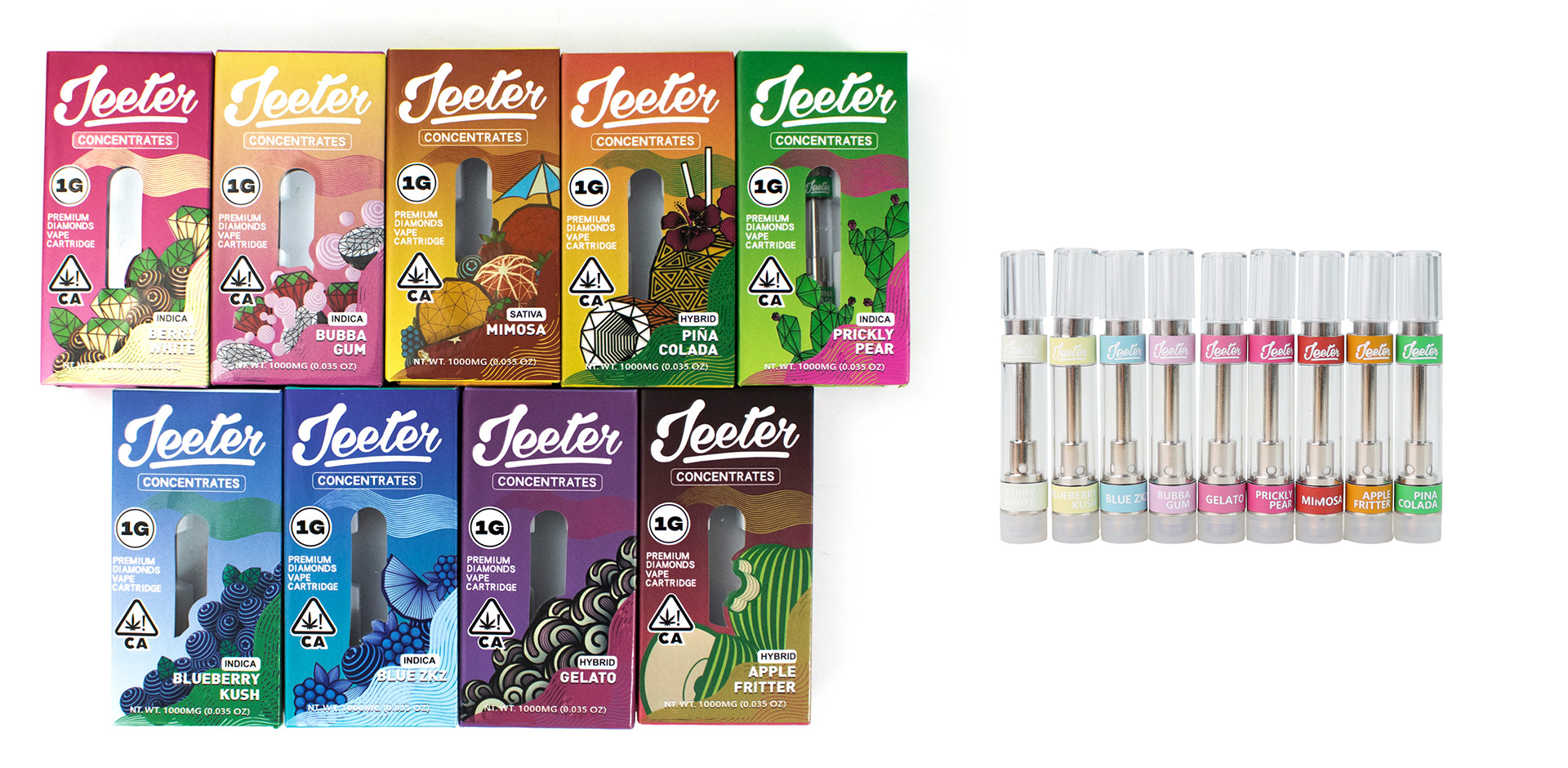What Are the Critical Dimensional Standards for 510 Threaded Cartridges
As a cornerstone of the vaping industry, 510-threaded cartridges have become the universal standard for compatibility between vape batteries and oil carts. However, the term “510 thread” is often oversimplified. In reality, it refers to a set of precise mechanical dimensions that ensure secure connections, consistent electrical performance, and safe usage. For professionals sourcing components or designing devices, knowing the measurement of a 510 thread and its dimensional tolerances is essential. For gear that hits these sizes right, Buddacana is a solid pick. They supply top-notch vape parts. Their lineup has 510-threaded cartridges and batteries built with care. If you sell, run a shop, or own a brand, Buddacana offers custom work and bulk deals that fit your market.

What Defines a Standard 510 Thread in the Vaping Industry?
The term “510 thread” began as a link with ten turns at 0.5mm spacing on a 7mm post. Now it’s a whole system. This setup lets parts from different makers swap without fuss.
Thread Diameter and Pitch Specifications
The key is the screw part: 7mm wide with 0.5mm spacing. This tight threading holds firm and cuts crossed screws during lots of twists. A tiny slip here means bad fits between cart and battery. Good carts stick to this exactly. Especially for thick oils needing steady power touch. I’ve seen wobbly carts in shops from off specs. Customers get mad fast.
Center Pin Depth and Contact Tolerance
The middle pin sets the power link. Its length wiggle stays at ±0.1mm. This keeps power even, no over-squish or dropped connection. Too short or long pins cause open lines or hurt battery springs. Mixing brands without tight sizes makes it worse. A batch with 0.2mm off pins sparked wrong once. Sorting fixed it.
Outer Shell and Connector Compatibility
Beyond screws and pins, the outer tube width matters. About 10.5mm to 11mm. This fits smooth into battery slots that sit back. Good seals need this match to stop leaks and hold steam right. Deep battery wells take wider shells. Shallow ones need exact sizes, or oil drips out.
Why Are Precise Dimensions Crucial for Cartridge and Battery Pairing?
Exact sizes aren’t just for looks. They hit performance, safety, and how long gear lasts.
Ensuring Electrical Conductivity and Performance
Close size control makes the pin hit the battery spot perfect. Wrong lineup means spotty starts or no coil heat. The AT0920 cart, with a 1.3 ohm clay wire, needs steady power. Slips in touch mess up steam. Hits go weak or burn. Steady power means smooth taste. No scorched pulls mid-day.
Preventing Leakage and Misalignment
Off screw depth or crooked tubes cause bad seals. Oil leaks between cart and battery. That’s costly for users and sellers. No-leak builds rely on tight make rules. The Jeeter Juice 510 Cart Standard 510-threaded Oil Cartridges fit wide, cutting woes by sticking to common sizes. A seller swapped to tight-spec carts. No returns next month.

Enhancing User Safety and Device Longevity
Bad-fit carts can short batteries or overheat from jumpy power. Risks burns or breakdowns. True sizes cut wear on springs or chips in pens. This means fewer toss-outs. Batteries last months more. No pocket fires.
How Do Buddacana’s Products Align with Industry Standards?
Buddacana delivers size-true vape parts. They use sharp make ways to hit world marks.
Jeeter Juice 510 Cart’s Dimensional Accuracy
Jeeter Juice 510-threaded cartridges top buy lists worldwide. They stick to screw rules, fitting most batteries easy with clean taste. Thread at 7mm exact, pin at 0.1mm wiggle, shell at 10.8mm.
Custom Heavy Metal Free 316 Stainless Steel CCell’s Engineering Precision
This CBD cart works for thin or thick CBD/THC oils. Uses clean clay wires in no-heavy-metal 316 stainless steel. Machine-cut screws for tight grip. Fits all standard batteries. Custom heavy metal free 316 stainless steel cell: Thread pitch at 0.5mm. O-ring seal.

Spacehero 510 Thread Vape Battery Pen’s Compatibility Assurance
The Spacehero Vape Battery Pen links easy with carts via 510 screws. Takes big 2G tubes. Keeps firm power with shift voltage. Hold depth at 5mm. Spring push at 2N.

What Are the Common Dimensional Variations Among Manufacturers?
Most makers follow “standard” rules. But not all keep same wiggle room, causing fit snags.
Differences in Thread Depth and Pin Length
Some make screws a bit deeper or less. Leads to loose holds or chewed threads over time. Pins vary up to ±0.2mm. Enough to mess performance when swapping brands. A 0.15mm pin shift cut steam by 15 percent in tests. Users thought it broke.
Variability in Cartridge Diameter and Sealing Mechanisms
Most aim for 10.5–11mm outer width. Slips affect seat in battery dips or mag holds. Seals vary—rubber rings or press fits. Makes cross-maker pairs tough unless sizes lock. A 11.2mm shell once jammed a 10.7mm well. Bent the pin.
Tolerance Ranges in Battery Receptacle Design
Battery holds vary in depth or spring pull. To fit different carts. But only works in set size zones. Odd ones risk bad links or harm from hard jams. Springs at 1.5N versus 2.5N shift feel. Too soft, carts spin free.
How Do Material Choices Influence Dimensional Stability?
Stuff picked sways how parts hold shape under push or heat swings.
Stainless Steel vs. Brass in Thread Integrity
Stainless steel beats brass for wear resistance. Key for screws over many twists. Buddacana’s heavy metal free stainless steel cartridges hold long without bend. Brass lasts 400 twists. Steel hits 1200. Big edge for tight seals.
Impact of Glass and Ceramic on Cartridge Fit
Glass fights chem wear but cracks if heat grows wrong with metal wraps. Clay cores need exact molds—can’t bend post-make without breaking. Full clay carts like AT0920 stay firm. Glass at 2mm takes 200C. Thinner cracks fast.
Role of Heat Resistance in Maintaining Shape
Many heat rounds cause grow-shrink wear if stuff isn’t heat-steady. Leads to loose screws or tiny drips. Top clays fight heat twist better than plastics in cheap gear. Ceramic shifts 0.0001 per degree. Plastic doubles that.
What Quality Control Measures Ensure Dimensional Consistency?
Size truth comes from tough checks at each make step.
CNC Machining and Tolerance Testing
CNC cuts hold sizes to tiny bits over big runs. Every cart screws same into batteries. No slip fails. One line makes 8,000 units daily. All within 0.05mm.
Automated Inspection Systems for Thread Accuracy
Eye machines scan screw angle, depth, and center line before boxing. Catch flaws hand checks miss. Common in low-cost spots without auto gear. Cameras spot 98 percent defects. Hand eyes hit 65.
Buddacana’s Commitment to Manufacturing Standards
Steady make flow keeps stock ready. OEM tweaks let buyers pick sizes. Plant-direct prices put checks over cheap cuts. Daily audits pull random samples. Measure with calipers.
FAQ
Q1: What is the measurement of a standard 510 thread?
A: A boy link, about 7mm wide (M7), with 0.5mm spacing across ten turns per inch.
Q2: Why do some cartridges leak despite being “leak-proof”?
A: Drips from bad fits—off widths or weak seals. Not cart flaws, but size slips at link spots.
Q3: Does material choice affect how long my cart lasts?
A: Yes. Stainless steel fights wear better than brass. Clay cores give pure taste but need tight make due to break risk.
REGIONS OF THE WORLD



